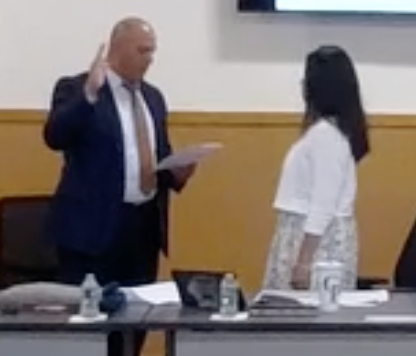Two preeminent events I look forward to attending in our beautiful community each year are Westbury Village Court’s annual Law Day, and Constitution Day, coordinated by Village Justice Thomas Liotti. I try to make them “must attend,” because for starters, admission is free, and the information that the distinguished panel disseminates is priceless.
This year’s Constitution Day at village hall (September 12) followed the same tradition, as panelists, which included Dean Michael Simons—St. John’s University School of Law, Edward Palzik, Esq., Erica Dubno, Esq., Katuria D’Amato, Esq., and Patrick Young, Esq. Program Director—Central American Refugee Center, held the audience in rapt attention as they delivered on their assigned subject area. The last speaker for the evening, Patrick Young, commanded even more attention as he touched on what might be an inconvenient truth for our residents, and a hard pill to swallow if the ominous picture that he painted turns out to be true.
During his 15 minutes presentation, Mr. Young reminded the audience that the Temporary Protective Status (TPS) for Hondurans will end in July 2019 and in September 2019 for Salvadorians. He summarized the history of this designation relative to the two groups, Honduras in 1999, and El Salvador in 2001, following natural disasters in the respective countries, and that over 26,000 TPS holders reside in New York State. He emphasized that for almost two decades, TPS recipients have been working, paying taxes, purchasing homes and has children who have gone through our school system.
He opined that if all TPS recipients are deported, neighborhoods will see an increase in vacant properties, loss of jobs, which ultimately will likely lead to foreclosed homes, depressed housing prices and abandoned “zombie homes.” This, to me, is not far-fetched especially if thousands of people lose their work authorization around the same time. It is not hard to imagine the impact this could have on local economies in places like Westbury, Hempstead, Freeport, Roosevelt, etc., not to mention the ensuing illegal activities that such set of circumstances could engender.
According to the latest census data conducted in 2010, just over 15,000 people (15,146) reside in Westbury, which remains rich in ethnic and racial diversity. The data also reveal that Hispanic or Latino was 18.85 percent, and many of the Hispanics were of Salvadoran origin. Since the average resident in Westbury will no doubt be concerned about this scenario as stated, and will have no way of gauging the degree of severity (if any) that is likely to occur, it behooves our elected officials—at all levels; either individually, or collectively to put this matter in perspective. They need to assure constituents that they are aware of the situation, and whether there are legislative solutions, or other contingency arrangements afoot to guarantee a seamless transition.
—Chester McGibbon


































